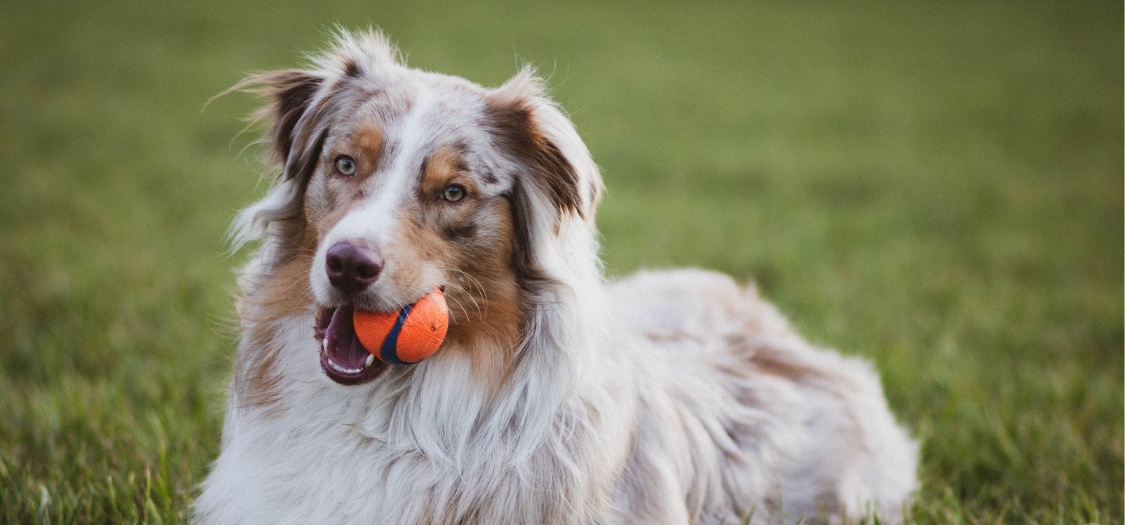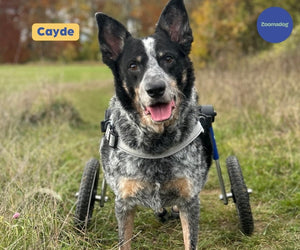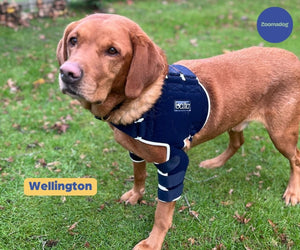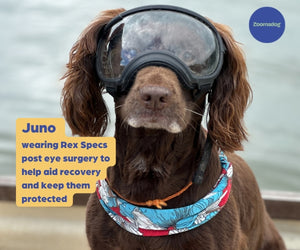01730 622544

I Think My Dog Has a Cruciate Ligament Knee Tear or Rupture. What Should I Do?
Like humans, knee injuries are a very common injury type in dog. The early signs that your dog might have a cruciate knee injury include limping, bunny hopping, having difficulty standing up or unable to weight bear.
If you think your dog has a cruciate ligament injury, you should firstly take your dog to your vet to be properly examined, assessed, and diagnosed.
Read more about Cruciate Ligament Injuries: Causes, Prevention and How to Help
Your vet will most likely take an X-ray to determine if it is a cruciate ligament injury. The X-ray will show the extent of the damage and severity of the injury. This, in turn, informs the treatment options available for your dog
Two main types of cruciate ligament injuries in dogs:
- Cranial cruciate ligament rupture
- Partial cranial cruciate ligament tear
Cruciate Treatment Options
Depending on the severity of your dog's cruciate knee injury, there are different treatment options available.
Surgery is a common route, especially for a complete cranial cruciate ligament rupture, as it has such a good success rate. The success rate is about 85-90%. One of the most common surgeries for cruciate ligament injury is called TPLO surgery.
Read about Cruciate Knee Dog Surgery here
However, surgery isn't always an option for your dog. Perhaps your dog is too old, has a secondary medical condition, you'd prefer them not to have surgery or surgery is simply not affordable for you. Many dog owners opt for the non- surgical route, due to one of these reasons.
Conservative Managament - The Non-Surgery Route
Conservative management will include: rest, restricted activity, anti-inflammatory medications, physical therapy and wearing a brace can be recommended for less severe cases, or for dogs that are not good surgical candidates. Wearing a dog brace for the ACL might be recommended, depending on the severity of the injury.
Read about Titus, the husky, and his non-surgical recovery here

Cruciate Knee Brace Option
A brace can also be an alternative to surgery for dogs where cruciate ligament surgery isn’t recommended or possible. Braces help to stabilise the knee joint and stop excessive movement (sliding) between the femur and tibia. They also reduce lateral movement and rotation of the knee, which gives the cruciate ligament a chance to heal. Please note that if there’s a fully ruptured cruciate ligament in your dog’s knee, the ligament won’t repair without surgery, even if your dog is wearing a brace.
Find Dog Cruciate Ligament Knee Braces here


Looking for help with your dog?
We can help find the right solution for your dog
Feel free to give us a call on 01730 622544
or email us at woof@zoomadog.co.uk







Leave a comment